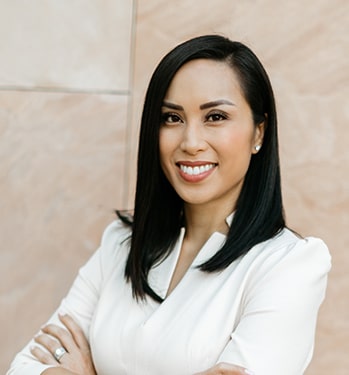Estate Planning for Blended Families (Second Marriage)

Estate Planning for Blended Families
Estate planning for blended families requires addressing issues specific to the blended family scenario.
What is a Blended Family?
Generally, in the estate planning world, the term “blended family” is used to describe a family where there is one or more step-children. This can take several forms: 1) Second marriage for both spouses with children from prior marriages; 2) Second marriage for one spouse, where at least one spouse has children from a prior relationship; 3) First marriage for both spouses, but either or both spouses have children from prior relationships; and 4) life partners who have children from prior relationships.
Estate Planning Issues Specific to Blended Families
No Estate Plan. The most common issue for blended families is the lack of any estate planning. If your blended family does not have an estate plan in place, then upon your death, there is a good chance your assets will never be distributed to your children, either by default or intentionally.
Brady Bunch Example #1: Mike and Carol Brady are married and each have children from prior marriages. Mike has 3 sons: Greg, Peter and Bobby. Carol has 3 daughters: Marcia, Jan and Cindy. Mike and Carol do not have an estate plan and Carol dies first. Under the California Probate Laws, Mike will likely receive most or all of Carol’s assets. If Mike does not do any estate planning after Carol’s death, then upon Mike’s death, his assets will pass to his children (but not his step-children) or his new spouse. Here, without any estate planning in place, Carol’s children will be disinherited by the default Probate laws. If Mike decides to have an estate plan prepared after Carol’s death, will Mike provide for Carol’s children or will he distribute all of his assets to his children? The discussion we often have with our blended family clients is regardless of best of intentions by either spouse, let’s have a plan in place so that there is no question regarding who will receive the assets in the future.
Traditional Estate Plan. Does your blended family have a joint trust (one trust for both spouses)? If you have a joint trust, there is a very good chance you have a traditional estate plan. All too often we see trusts that were prepared by non-attorneys or attorneys that are not specialists in estate planning that use the traditional estate planning formula for blended families. The traditional estate plan states that when either spouse passes away, the joint trust splits equally between two sub-trusts (“A” Trust and “B” Trust). Both the A Trust and B Trust state the same thing: provide for the surviving spouse, and then after surviving spouse’s death, all assets are divided equally between both spouse’s children. Seems fair enough, right? The following example shows why this traditional estate planning approach creates what we call the 75% trap:
Brady Bunch Example #2: Mike and Carol prepare a traditional estate plan. Mike’s and Carol’s only asset is $1.2 million in cash. Carol passes away first. The trust splits the cash equally between two sub-trusts ($600,000 to the “A” Trust and $600,000 to the “B” Trust). Both the A Trust and B provide for Mike’s care, and then after Mike’s death, all assets are divided equally between the six children. So when Mike passes away, the A Trust will be split six ways ($100,000 to each child) and the B Trust will be split six ways ($100,000 to each child). So far, so good.
The issue is that the A Trust is revocable (can be changed) by Mike until he passes away. If after Carol passes away, Mike decides to change the terms of the A Trust to provide only for his children, then upon Mike’s death, the A Trust will be divided 3 ways ($200,000 to each of Mike’s children) and the B Trust will still be divided 6 ways ($100,000 to each of the six children), so that each of Mike’s children receive a total of $300,000 each, and Carol’s children receive $100,000 each. Thus, 75% of the family assets end up in the hands of Mike’s children, and 25% in the hands of Carol’s children. This is not the plan that Carol agreed to when she was alive. Unfortunately, most estate plans fall into this 75% trap.
Another issue with traditional estate planning for blended families is choosing the appropriate Trustee (person in charge of the Trust). Traditionally, after the first death, the surviving spouse is the Trustee of the A Trust and B Trust, but this will often lead to issues between the surviving spouse and step-children. The step-children are left with a tough decision: question their step-parent’s proper use of the B Trust and risk being disinherited from the A Trust or simply ignore any improprieties by the step-parent and hope they are not disinherited from the A Trust.
These are only a few issues with the traditional estate plan approach for blended families. Fortunately, with better planning, many of these issues can be avoided or mitigated.
Blended Family Estate Plan
As a blended family, you are often trying to balance the needs of your spouse and your children (sometimes one more than the other). Many of our clients want to provide for the surviving spouse should something happen to either of them, but also want to ensure that their own children receive an equitable portion of the assets after the second spouse’s passing.
Estate Planning for the Blended Family. Rather than creating a single joint trust, we create three trusts: a joint trust and a separate trust for each spouse. Here’s how it works. The joint trust will hold community property (joint) assets between spouses. The separate trusts will hold each spouse’s separate property, if any. Upon the first spouse’s death, the joint trust assets will be distributed to each spouse’s own trust. Each separate trust will have its own trustee and its own beneficiaries.
Brady Bunch Example #3: Same facts as Example #2, except Mike and Carol prepare three trusts: a joint trust, Mike’s Trust and Carol’s Trust. Let’s assume that all of the $1.2 million of cash is held in the joint trust. When Carol passes away, the joint trust is divided equally between Carol’s Trust ($600,000) and Mike’s Trust ($600,000). Carol’s Trust may or may not provide that during Mike’s life, he is the beneficiary of Carol’s Trust. However, after Mike’s death, Carol’s Trust will be distributed to Carol’s children ($200,000 to each of Carol’s three children). Similarly, Mike’s Trust will continue to be held for his own benefit while he is alive, but after his death, only Mike’s children will be the beneficiaries of Mike’s Trust ($200,000 to each of Mike’s three children).
By creating a separate trust for Mike and Carol, we can ensure that Mike’s children receive 50% of the assets and Carol’s children receive 50% of the assets.
We can also choose a different trustee for each of Mike’s and Carol’s Trust without any of the children having to worry about being disinherited by the surviving spouse. If Mike is the trustee of Carol’s Trust, Carol’s children can ensure that Mike is properly administering Carol’s Trust without fear that they will be disinherited.
One Spouse Comes Into the Marriage With More Assets. It is not unusual for spouses to come into a second marriage with an unequal amount of assets. Often times, the spouse with more assets wants to ensure that his or her assets will be distributed to his or her children after both spouses pass away. The blended family estate plan takes these additional assets into consideration.
Brady Bunch Example #4: Same facts as Example #3, except when Mike and Carol married, Mike had no assets and Carol had $300,000 in cash. Over time, Mike and Carol accumulated $1.2 million of joint assets. In this example, while both Mike and Carol are alive, Mike and Carol will have $1.2 million in their joint trust, Mike’s Trust will have no assets and Carol’s Trust will have $300,000 of assets. Again, Carol passes away first. The joint trust is split equally between Mike’s Trust and Carol’s Trust. Mike’s Trust now has $600,000, but Carol’s Trust has $900,000 ($300,000 from before they were married, plus $600,000 from the joint trust). Upon Mike’s later passing, Mike’s Trust will distribute $200,000 to each of Mike’s children and Carol’s Trust will distribute $300,000 to each of Carol’s children.
By using the blended family estate planning approach, Carol is able to ensure that her separate assets and half of the joint assets are distributed to the beneficiaries she chooses.
Estate Planning Attorney for Blended Families
While many of our blended family clients fall into one of these categories, there are several more scenarios that are also specific to blended families. John L. Wong, experienced Orange County Estate Planning Attorney at Modern Wealth Law, can advise you on these unique issues and prepare a plan to address each of them. You may call us at (949) 371-5003 or contact Modern Wealth Law by email, and John L. Wong will be happy to discuss your options with you.

John Wong advises on all aspects of estate planning, probate, asset protection and trust administration. He believes that estate planning is about planning for life; while having protections in place should the unexpected occur.



